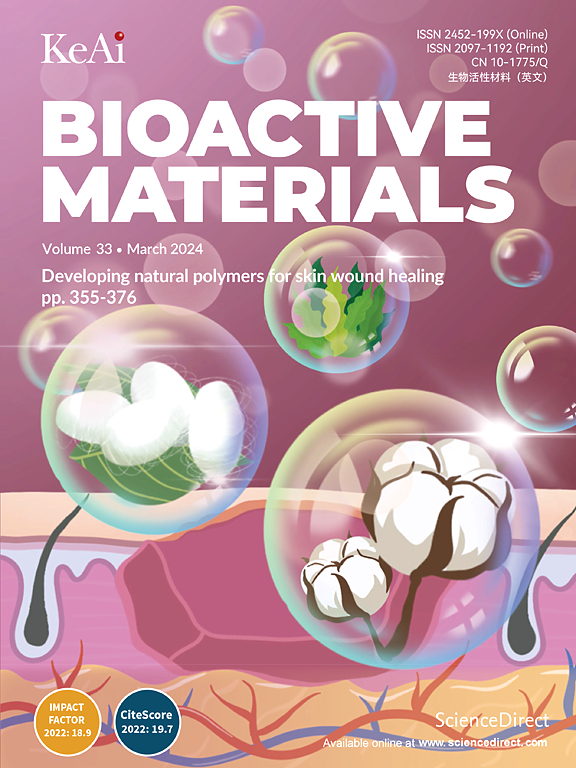Primary and Re-exposure effects of D-enantiomeric peptide on metabolism, diversity, and composition of oral biofilms at different stages of recovery
IF 18
1区 医学
Q1 ENGINEERING, BIOMEDICAL
引用次数: 0
Abstract
The persistence of bacteria in the root canal system is the primary cause of recurrent apical periodontitis. The adaptability of residual bacteria to changing environmental conditions is a key survival strategy of biofilms, often leading to endodontic treatment failure. DJK-5 is a protease-resistant, broad-spectrum D-enantiomeric peptide that degrades or prevents the accumulation of guanosine penta- and tetraphosphates, which are important for biofilm formation. We evaluated the effects of primary antimicrobial agents and nutrient conditions on the recovery, metabolism, diversity, and composition of oral biofilms, and investigated how these factors affect the efficacy of DJK-5 and chlorhexidine (CHX) during re-exposure. Primary irrigants and nutrient conditions significantly influenced biofilm recovery, metabolic activity, diversity, and composition. Biofilm recovery was slower in nutrient-poor groups compared to nutrient-rich ones, and nutrient availability had the greatest effect on shaping both the diversity and composition of the biofilms. Water and DJK-5 groups showed similar biofilm diversity trends, while CHX generally led to lower diversity. Results indicate that primary irrigants and nutrient conditions significantly impact biofilm composition, diversity, and recovery. However, these changes did not compromise DJK-5's effectiveness in killing of biofilm microbes during re-exposure of recovered biofilms.

求助全文
约1分钟内获得全文
求助全文
来源期刊

Bioactive Materials
Biochemistry, Genetics and Molecular Biology-Biotechnology
CiteScore
28.00
自引率
6.30%
发文量
436
审稿时长
20 days
期刊介绍:
Bioactive Materials is a peer-reviewed research publication that focuses on advancements in bioactive materials. The journal accepts research papers, reviews, and rapid communications in the field of next-generation biomaterials that interact with cells, tissues, and organs in various living organisms.
The primary goal of Bioactive Materials is to promote the science and engineering of biomaterials that exhibit adaptiveness to the biological environment. These materials are specifically designed to stimulate or direct appropriate cell and tissue responses or regulate interactions with microorganisms.
The journal covers a wide range of bioactive materials, including those that are engineered or designed in terms of their physical form (e.g. particulate, fiber), topology (e.g. porosity, surface roughness), or dimensions (ranging from macro to nano-scales). Contributions are sought from the following categories of bioactive materials:
Bioactive metals and alloys
Bioactive inorganics: ceramics, glasses, and carbon-based materials
Bioactive polymers and gels
Bioactive materials derived from natural sources
Bioactive composites
These materials find applications in human and veterinary medicine, such as implants, tissue engineering scaffolds, cell/drug/gene carriers, as well as imaging and sensing devices.
 求助内容:
求助内容: 应助结果提醒方式:
应助结果提醒方式:


